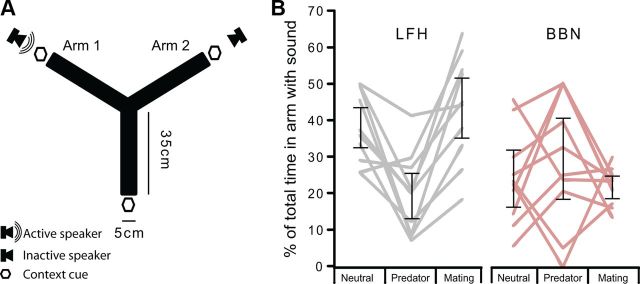Figure 2.
Approach behavior of male mice to the female LFH call, but not to BBN, is context-dependent. A, Schematic of the Y-maze. Contextual cues were presented simultaneously from the end of each arm, while sound was presented from either Arm 1 or Arm 2 during a given trial. B, Attractiveness of acoustic stimuli under different contexts. Gray or pink lines indicate, for individual mice, the percentage of total time the animal spent in the arm of the Y-maze from which the sound originated. Error bars represent 95% confidence intervals of the mean. The LFH call was significantly more attractive to male mice in the neutral and mating conditions than it was in the predator condition. The approach behavior for BBN was not significantly modulated by nonauditory cues.

